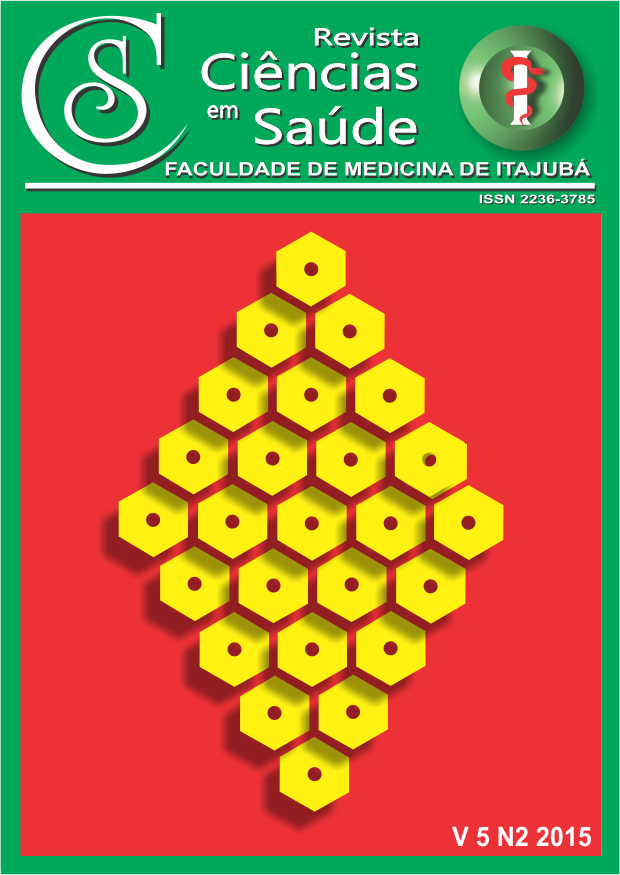Abordagem Tardia do Trauma de Pênis: Relato de Caso/Late Approach of Penile Trauma: Case Report.
Main Article Content
Abstract
RESUMO
Introdução: A fratura de pênis trata-se de uma urgência urológica incomum e pode ser definida como trauma peniano fechado que resulta na ruptura da túnica albugínea. A apresentação clínica do quadro é descrita pelo paciente como um “estalido” ocorrido pelo rompimento do corpo cavernoso, acompanhado de dor, detumescência peniana imediata, edema e hematoma. Durante o exame observa-se o desvio peniano para o lado oposto ao da fratura. O diagnóstico da fratura peniana é clínico. O tratamento preconizado seria a intervenção cirúrgica com identificação do local do trauma, evacuação do hematoma, hemostasia e sutura do corpo cavernoso. Devendo ser associado antibioticoterapia profilática. Casuística: O presente relato tem como objetivo descrever um quadro atípico de fratura de pênis em que o paciente não apresentou “estalido”, nem detumescência como nos casos relatados na literatura. Além disso, a conduta tomada frente ao trauma foi diferenciada, visto que a abordagem cirúrgica ocorreu 18 dias após a fratura. Discussão: O tratamento preconizado, de intervenção cirúrgica imediata foi contraindicada em decorrência do edema volumoso que o paciente apresentava no momento do atendimento inicial. A equipe médica optou por reduzir o edema com o uso de anti-inflamatórios e a abordagem cirúrgica foi realizada tardiamente. Diferentemente do que foi encontrado na literatura, a intervenção cirúrgica é preconizada como tratamento imediato. Conclusão: Concluiu-se que a conduta adotada, reduzir o edema local e abordar cirurgicamente em um segundo momento, foi bem indicada uma vez que o paciente apresentou uma boa evolução.
Palavras chave: Fratura, Pênis, Trauma
ABSTRACT
Introduction: The penis fracture is an unusual urological emergency and can be defined as closed penile trauma resulting in rupture of the tunica albuginea. The clinical presentation of the patient table is described as a "click" occurred by disruption of the corpus cavernosum, followed by pain, immediate detumescence penile edema and hematoma. During the examination one can see the penile deviation to the opposite side of the fracture. The diagnosis of penile fracture is clinical. The recommended treatment would be surgical intervention with identification of the trauma site, hematoma evacuation, hemostasis and suturing of the corpus cavernosum. It should be associated with prophylactic antibiotics. Case Report: This report aims to describe an atypical case of penile fracture in which the patient did not "click" nor there was detumescence as in the cases reported in the literature. The therapeutic decision facing the trauma was a surgical approach after 18 days of fracture, with clinical treatment in this period. The patient had no complications during the period in which he was assisted. Discussion: Immediate surgery, which is the recommended treatment, was contraindicated in this case due to the massive swelling that the patient showed at the time of initial treatment. The medical team chose to reduce the edema with the use of anti-inflammatory drugs and surgical approach was performed afterwards. Unlikely what was found in the literature, according surgical intervention is recommended as an immediate treatment. Conclusion: This treatment was effective in reducing local edema and made it possible to have the surgical approach in a second moment, being well indicated once the patient showed good evolution.
Keywords: Fracture, Penis, Trauma.Article Details
Authors maintain copyright and grant the HSJ the right to first publication. From 2024, the publications wiil be licensed under Attribution 4.0 International 
 , allowing their sharing, recognizing the authorship and initial publication in this journal.
, allowing their sharing, recognizing the authorship and initial publication in this journal.
Authors are authorized to assume additional contracts separately for the non-exclusive distribution of the version of the work published in this journal (e.g., publishing in an institutional repository or as a book chapter), with acknowledgment of authorship and initial publication in this journal.
Authors are encouraged to publish and distribute their work online (e.g., in institutional repositories or on their personal page) at any point after the editorial process.
Also, the AUTHOR is informed and consents that the HSJ can incorporate his article into existing or future scientific databases and indexers, under the conditions defined by the latter at all times, which will involve, at least, the possibility that the holders of these databases can perform the following actions on the article.

